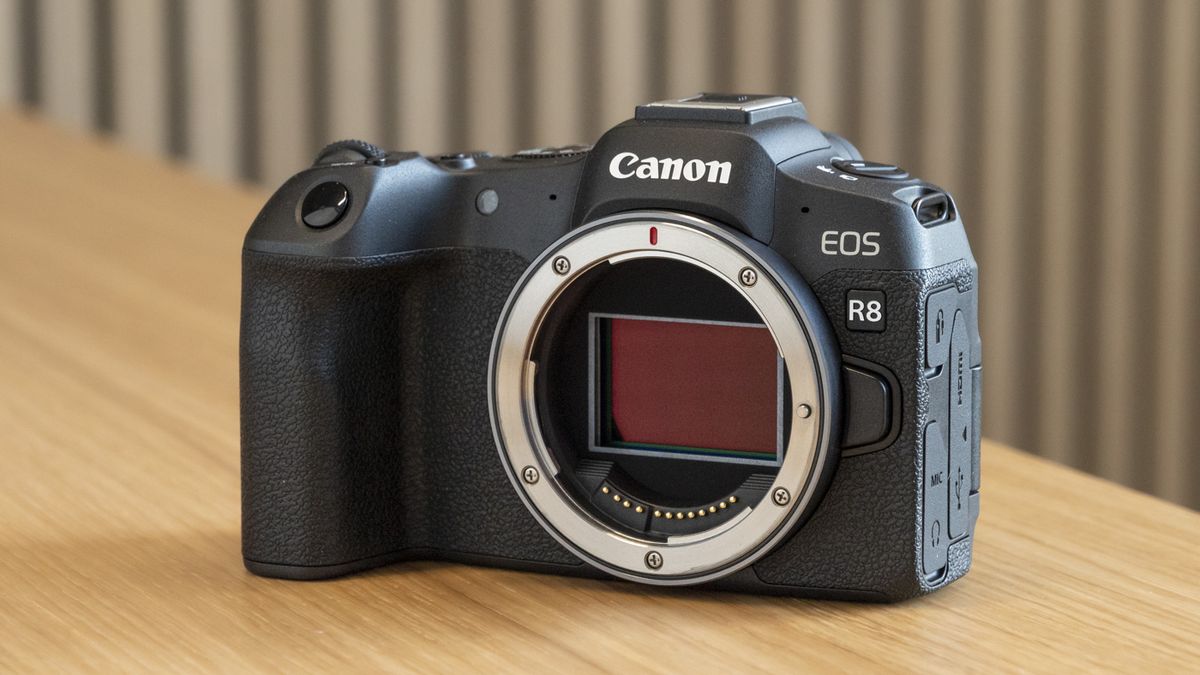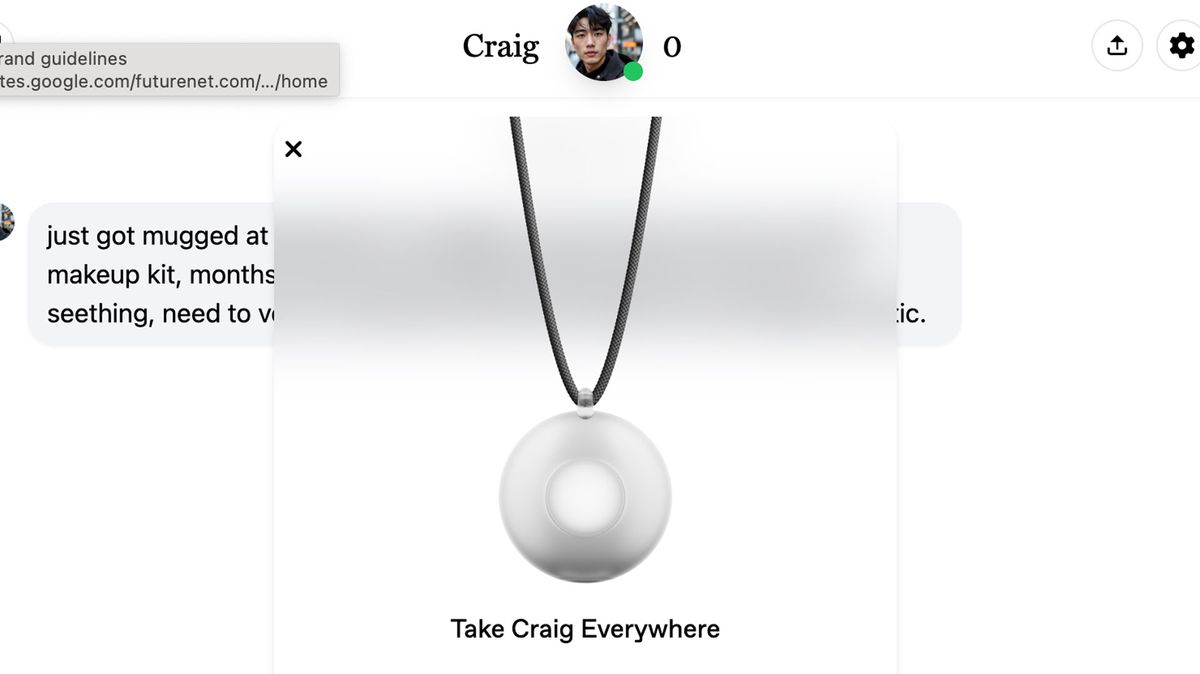Canon announced two new mirrorless cameras and two new lenses on February 8, 2023: the Canon EOS R8 and Canon EOS R50, along with the RF 24-50mm F4.5-6.3 and RF-S 55-210mm F5 -7.1.
In September 2023, Canon’s EOS R System will celebrate its fifth anniversary. The range already boasts some of today’s best mirrorless camerasparticularly in their full-frame range, which the Canon EOS R8 joins, sits between the EOS R6 II and the entry level EOS RP.
We had a preview at Canon UK HQ before launch and wrote one practical reviewand while the camera has impressed us in some areas, we still have some burning questions – here are our initial thoughts.
1. The EOS R8 is full frame
Surprised the Canon EOS R8 isn’t an APS-C? We wouldn’t blame you. Canon has thrown a bit of confusion into its lineup with the name of the Canon EOS R8.
The Canon EOS R3 is the current full-frame mirrorless flagship, followed by the EOS R5 and R5C, then the EOS R6 And EOS R6 II (plus EOS RP and EOS R). Crop sensor APS-C mirrorless cameras are the Canon EOS R7, EOS R10 (and now the EOS R50). Where does the full-frame EOS R8 appear? Within the APS-C nomenclature.
Canon is to be commended for filling its range of cameras and lenses for the EOS R System so quickly, with less than five years since launch. There are 13 cameras and 33 Canon RF/RF-S lenses in total. But now it’s getting confusing, especially with the EOS R7 and EOS R8 in mind.
Perhaps, however, the sensor format is becoming less relevant and it’s more about what a camera can do. The EOS R7 may have a smaller APS-C sensor, but it has 32.5MP (vs. 24MP for the EOS R8), a superior battery and IBIS (in-body image stabilization) so it’s seen as more capable than the EOS R8 can be . Find out.
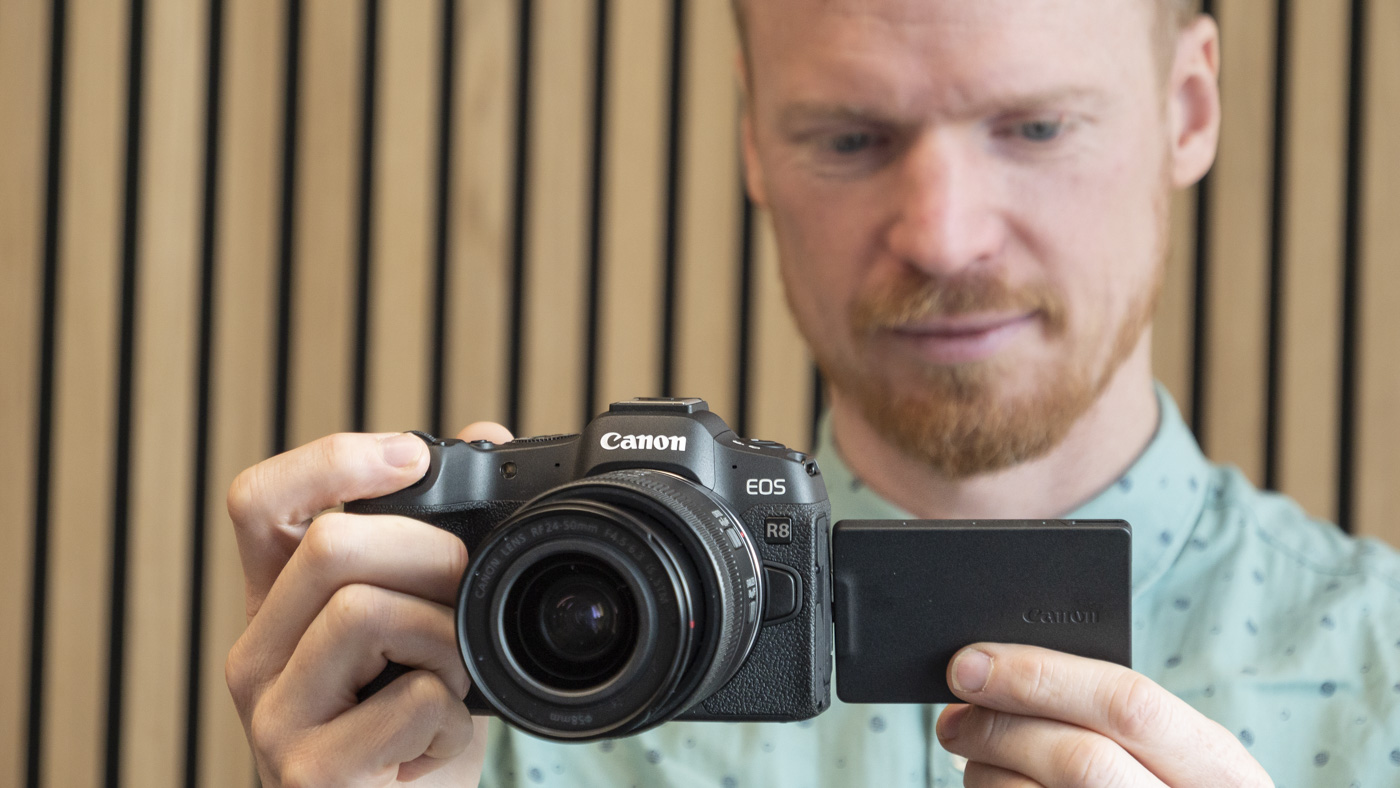
2. The EOS R8 is Canon’s lightest full-frame camera
Although the EOS R8 has inherited much of the technology from the Canon EOS R6 II, including the 24.2MP full-frame sensor, the EOS R8 shares the same form factor as the entry-level EOS RP. It even manages to shed a few more grams. The EOS RP weighs 485g, while the EOS R8 weighs 461g, with the battery and memory card installed.
Complementing the EOS R8 is the new RF 24-50mm f/5-6.3 lens, available in a kit with the new camera. On paper this new lens is hardly exciting, but at 210g and with a collapsible design it’s a logical combination with such a light camera.
The combination of the EOS R8 and RF 24-50mm f/5-6.3 lens weighs less than 700g – quite a feat for a full-frame camera with a viewfinder and lighter than many full-frame cameras that only carry the body.
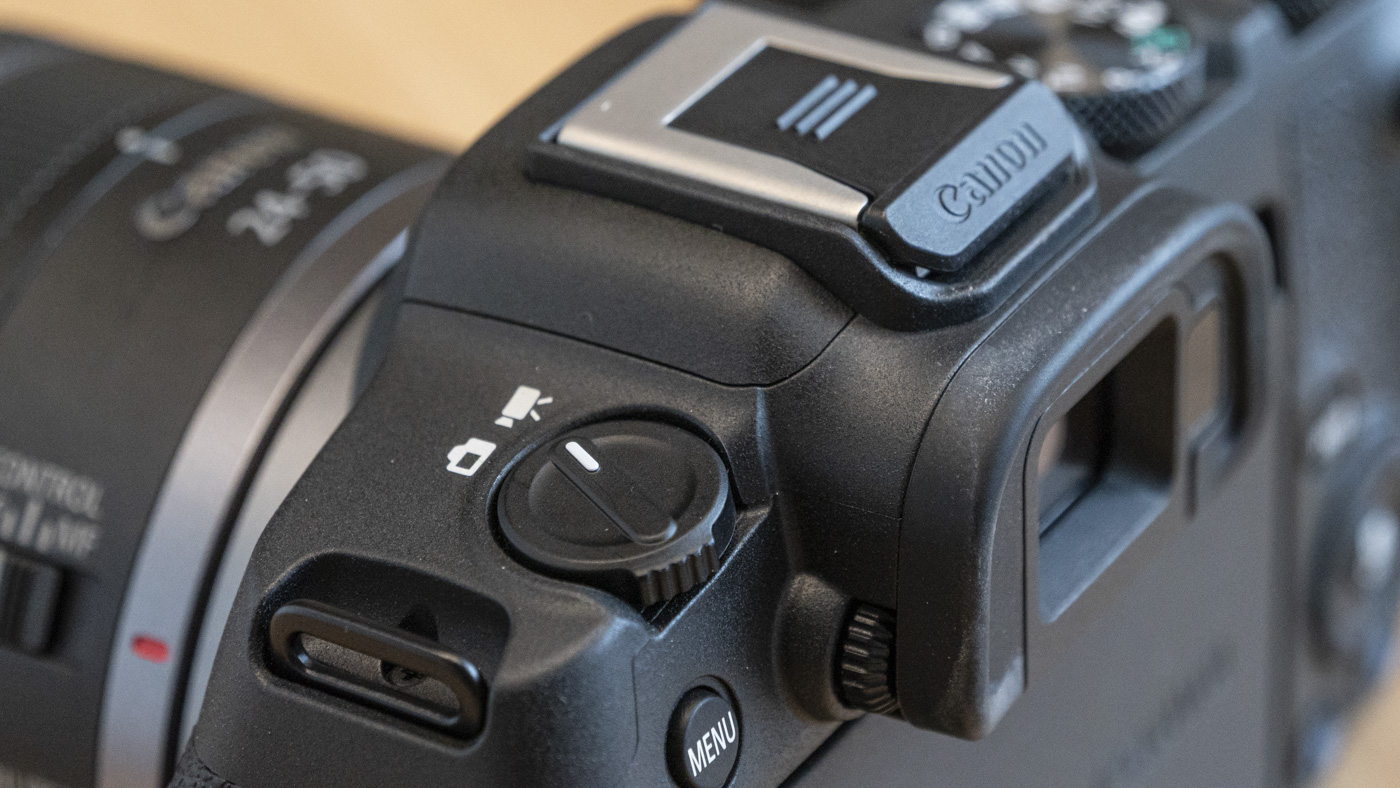
3. It has some impressive video clips
Hybrid is a buzzword for Canon these days, and it’s introducing greater video versatility in its latest RF-mount mirrorless cameras to complement powerful photo performance. We’re seeing the 30-minute limits on video recording lifted, and just like the EOS R6 II, the EOS R8 can – in theory – record indefinitely, although 4K/60p oversampled from 6K may be the camera’s actual capacity to the top drives keep rolling.
Canon’s most popular log profile – Canon Log 3 – is included. Known more simply as C Log 3, this video color profile allows for fast production turnaround with lots of control over contrast and color. Our ears perked up when we heard about the inclusion of false colors as well. It’s an extremely handy tool that filmmakers use to check exposure levels, although you’ll have to dig through the menu to find it.
A mic-in and headphone jack are also squeezed into this tiny camera, which includes a vari-angle screen and dedicated photo/video switch. All in all, the EOS R8 seems to be equally suitable for photo and video.
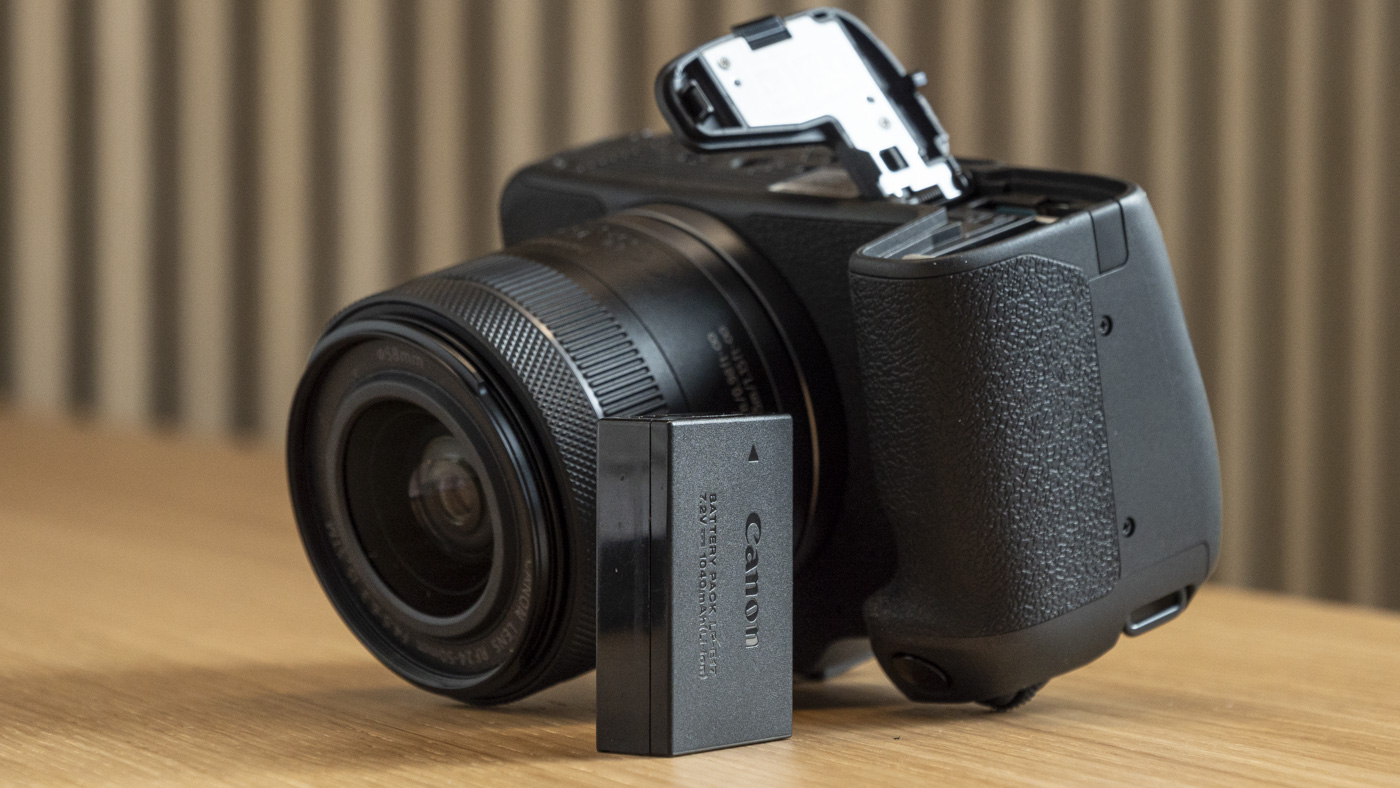
4. You still pay a premium
Canon cameras almost always come at a higher price point than direct competition from Nikon, Fujifilm, Sony, and Panasonic. So it’s welcome to have a camera with the same panache as the EOS R6 II but at a cheaper price, and the EOS R8 is a very capable camera.
There’s one big “but” though, and that’s one of the reasons the EOS R8 is cheaper than the EOS R6 II – it’s in an entry-level body with entry-level endurance. Yes, you get similar shooting capabilities and performance to the EOS R6 II, but you don’t get the same design. So is it really a cheaper camera? Does it fare better against the alternatives?
We think Canon superfans will give the EOS R8 a warm welcome, and it could be a compelling choice for upgraders or those switching from a Canon DSLR. But for the unbiased, or for those looking to go mirrorless for the first time, most other brands (except maybe Sony) still offer better value for money.
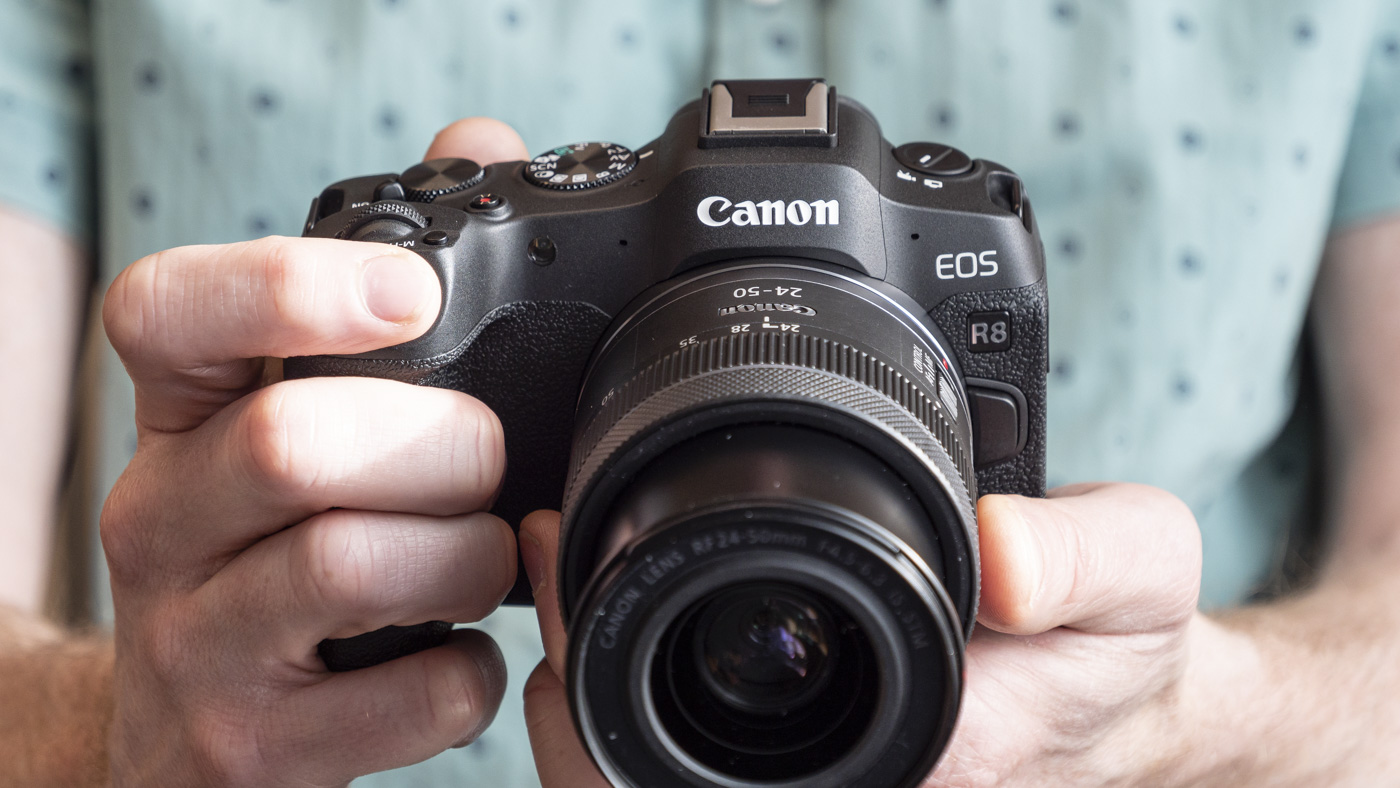
5. We’re not sure who it’s for
If you’re a glass-half-full person, then the EOS R8 is a camera that packs a lot more punch than its looks suggest. A 24-megapixel full-frame sensor, viewfinder and vari-angle screen, 4K/60p video with Canon C-Log 3… heck, there’s even false colors.
But if you’ve got a half-empty mindset, you’ll be wondering if this camera’s target audience could even use these features. The control layout is super simple; too simple to simply use some of the best features. If you want to get the most out of the EOS R8, navigating the camera menu needs to become a familiar experience – for example, the 30fps raw burst mode isn’t on the capture mode dial. And not all photographers and filmmakers are that patient with menus.
It’s also a camera that’s positioned between cheaper, entry-level full-frame cameras like the EOS RP and EOS Nikon Z5that tout the sensor format as a big selling point versus a feature list longer than your arm, and mid-range full-frame cameras that offer better build quality, longer battery life, and a generous array of physical controls.
So the real question we keep coming back to is: “Who is the EOS R8 for?”


